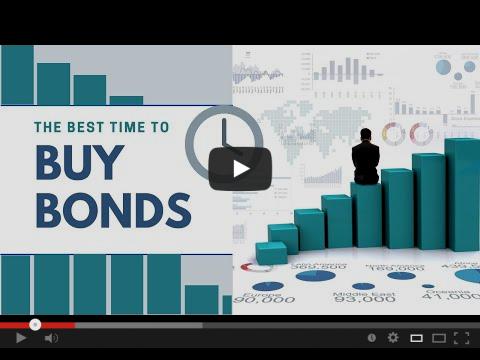As many are aware, the first six months of 2022 provided the worst bond returns we have seen to start a year in over two centuries. As can be expected, when bond yields double to start the year, new bond investors are not going to be willing to pay much for the older bonds. The Federal Reserve has been raising rates on the short end more aggressively than any time in recent memory and we have seen 10 -and 30-year treasury rates exceed those of the last rate hiking cycle for the first time since the 1970s and early 80s.
Although rates are down somewhat since then, mid-June bond rates for 10- and 30-year Treasuries peaked at close to 3.5%. We anticipate this will be the high for yields for the next couple of years. The Federal Reserve is giving some indications that they will soon be done tightening and rates usually peak prior to the end of the tightening cycle. The narrative is starting to turn to warding off recession rather than fighting inflation. As unemployment numbers start to cause concern, rates hikes will likely end.
WORST CASE SCENARIO FOR BONDS IN THE REAR VIEW MIRROR?
We just witnessed the worst drawdown for bonds we have seen in over 40 years. As can be seen below, the last time bonds declined by close to ten percent, we witnessed a gain of well over 30% in the following couple of years. The seven percent drop in 1994 provided a 19% gain in the following year as well.

The forty-year period from 1980 through 2020 provided a great environment for bonds. It is hard to not do well when the yields start out paying over 15% unless these yields move even higher. Those who locked in at these rates in longer maturity bonds were well rewarded.
Higher yields pushed down bond prices over the last six months. But if interest rates start to fall from here, this will be a much better scenario for the year or two. We cannot guarantee that yields will drop from here, but with the Atlanta Fed noting that we may already be in a recession, retail & home sales dropping and more signs of hiring freezes, we anticipate lower yields and higher bond prices in 2023.
Recessions cannot be avoided forever.
Although the last recession took 12 years to develop after the great financial crisis, the next one may be closer than many wish to believe. Bond yields tend to drop during recessions as investors shift assets to areas, they feel are the safest.
What type of return can we currently expect from bonds over the next five years?
The chart below shows the average five-year return for bonds over the last fifty years based upon where interest rates started in the various decades. As of 6/30/2022 this gives us an expected return of 4% for the next five years based upon the data below.

How did Bonds Fare in Previous Recessions?
The late 1990s provided us with a technology boom and the Federal Reserve had started hiking rates mid-year. Treasury yields did not peak until January 2000 and the yield curve inverted in February. Technology stocks peaked in March and the S&P 500 traded sideways to down until October. Those who shifted part of their portfolio to bonds at the peak in yields in 2000 were protected from the dotcom bust. Bonds appreciated by over 20% over the next couple of years while equities suffered.

What If Yields Peak and The Stock Market Keeps Rising?
In Early 2006 yields peaked prior to the Federal Reserve’s last rate hike. Equities outperformed bonds during 2007 as bond yields tried to march to new highs mid-year. Those who owned treasury bonds in their portfolios were well protected during the financial crisis as long-term treasury bonds appreciated by over 40% through December 2018 while equities were down substantially.

What about Protection During the Pandemic?
Bond yields peaked in October 2018 prior to the final rate hike in December of that year. The markets were spooked by the Federal Reserve tightening at the time and we saw a significant selloff to end the year. Equity markets rallied in 2019 when the Fed stopped raising rates, but bonds rallied even further during much of that period with less downside volatility. As can be seen below, long term treasury bonds were up over 40% from late 2018 through March of 2018 while stocks suffered greatly at the height of the pandemic.

Timing the Market is Extremely Difficult
In looking at these charts, it would be amazing to be able to move to bonds in October 2018 and shift back into equities at the low in March 2020. We do not pretend to be able to accurately determine when the exact highs and lows will be for bonds or equities. We can however get a feel for this based upon past history and make sure we are diversified to help protect portfolios during these downturns. Over the last few months, we have held a higher exposure to commodities and energy stocks and have been underweight bonds as we had grown concerned about sticky inflation and aggressive Federal Reserve tightening. Currently we feel it may be a better idea to start increasing bond exposures as inflation fears are starting to give way to recession concerns.

Why Aren’t Banks and Money Markets Paying Better Yields?
With treasury yields at multi-year highs, you might expect banks and money markets to be paying better than they are currently. Banks and brokerage firms like to make a profit, and many will keep these rates low for as long as possible to maximize these profits. There are a few banks and money markets that are paying better yields in this environment, however. We have been able to partner with some of these banks through our association with TD Ameritrade as they compete for deposits. Rates are rapidly approaching 2% on FDIC insured savings accounts and we are able to get automatic optimization of yields on a monthly basis through our Cash-Max program.
If you are tired of “Lazy” dollars laying around in money markets and savings accounts and want to learn more, feel free to watch the video above. You may also reach out to us at our office by phone, and we will be honored to serve you in the best way possible.

Joe Franklin, CFP®
President, Wealth Advisor
Franklin Wealth Management, LLC
423-870-2140
www.Franklin-Wealth.com
Copyright © 2021 Franklin Wealth Management, LLC All rights reserved.
Investment Advice offered through Innovative Advisory Partners, LLC, a registered investment advisor.





